The Guardian picture essay
Cuba during the pandemic – photo essay

Avril and her friend are students at the National Ballet School, and train at home.
Photographer Leysis Quesada Vera describes life during the pandemic in Havana’s Los Sitios neighbourhood. Her work is supported and produced by the Magnum Foundation, with a grant from the Henry Luce Foundation. Magnum Foundation is a nonprofit organisation that expands creativity and diversity in documentary photography. Through grant making and mentorship, Magnum Foundation supports a global network of social justice and human rights-focused photographers and experiments with new models for storytelling
by Ruaridh Nicoll
Fri 7 May 2021
Los Sitios lies to the south of Centro, the careworn barrio that gives Havana its coarse voice and whose northern limit is the Malecon, the famous corniche set against the Florida Straits.
The photographer Leysis Quesada Vera describes Los Sitios – her neighbourhood – as home to “people who work with tourists but not in the hotels. They sell cigars, probably illegally, clean the houses where tourists stay, sell souvenirs.”
The pandemic has pauperised these people. “What they’re doing now is queueing to buy things from the store to resell them on the black market.” She understands. She is raising two children and hasn’t had any income for a year.
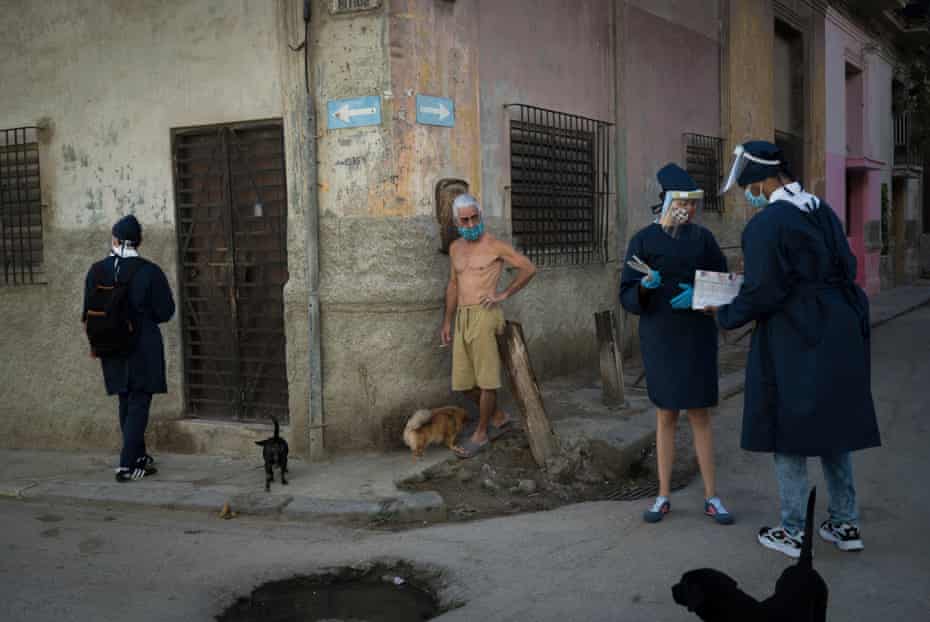
Tracers, medical students who screen households and undertake contact tracing, confer in the street.
Advertisement
For much of 2020, Cuba’s extensive health system kept the virus all but beyond the island’s borders, but at the cost of tourism. The economy contracted by 11% , imports fell by 40%.
Still, even the few reported cases spooked residents. There was an outbreak in Los Sitios and the authorities blocked the roads in and out.
Leysis is from San Francisco, a village of 50 houses without electricity in the state of Matanzas. She came to Havana in 1996 “like a crazy girl without any home. I’ve been living in all the tough neighbourhoods.”
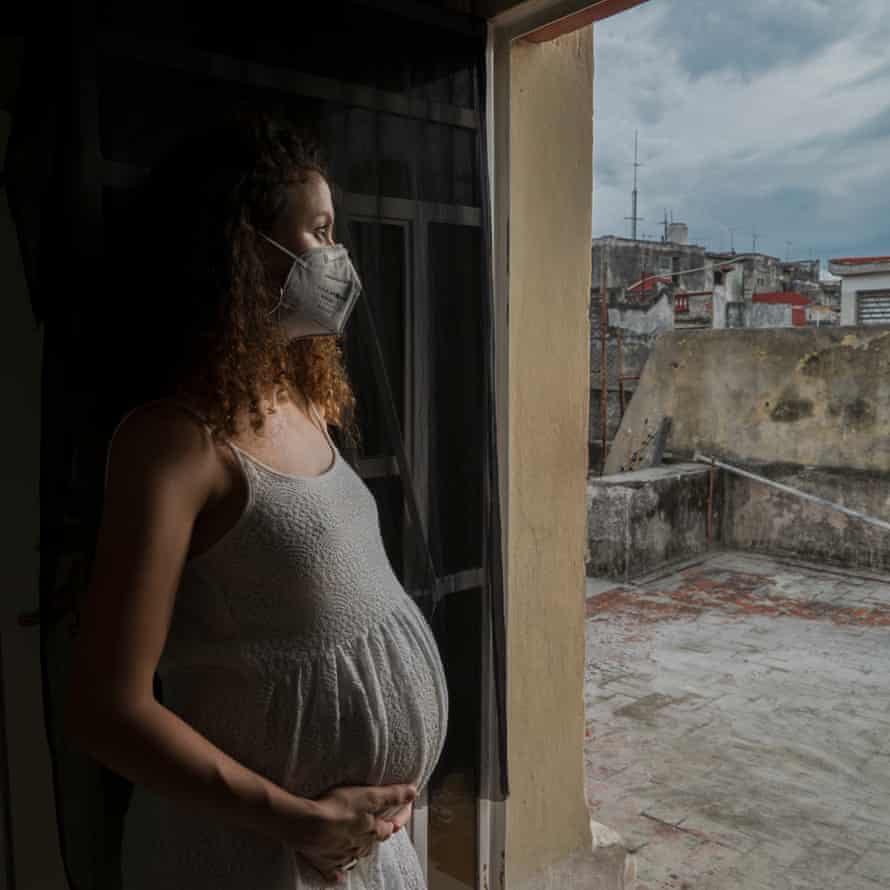
Yenifer Almeida in the last months of her pregnancy.
She was an English teacher, but hung out with photographers, and in photography studios. “l was going to every exhibition – photography and painting – and I loved the bohemian life.” Her first camera was a Nikon FM2; her greatest subjects would become her daughters, Avril and Mia.
“At the beginning of the pandemic I think everyone was afraid.” Certainly she stayed at home at first, but as the streets were sealed off, she ventured out. “It was a mess before they realised they needed to organise,” she says.
Advertisement
Even prior to the virus, Cuba was suffering. Donald Trump’s administration had tightened the 60-year-old US embargo, shutting down the channels through which Cubans abroad could send money home. Cuba’s antiquated infrastructure was already crumbling, the city falling down around Leysis.
Crowds wait in the streets - an everyday occurrence.
The virus added hunger. The government maintains controls of all imports but now has little hard currency to pay for them. Huge queues formed whenever there were rumours of chicken, oil or medicine.
“It used to be easy for me to walk in the street and take pictures,” she says. “But now, with people suffering and stressed it is different. They’d watch me taking pictures of the queues and were sometimes aggressive. One day a woman attacked me.”
At the same time, medical students were spreading out through the streets, asking door to door for news of symptoms. Leysis photographed them as they slipped by like modern-day plague doctors.


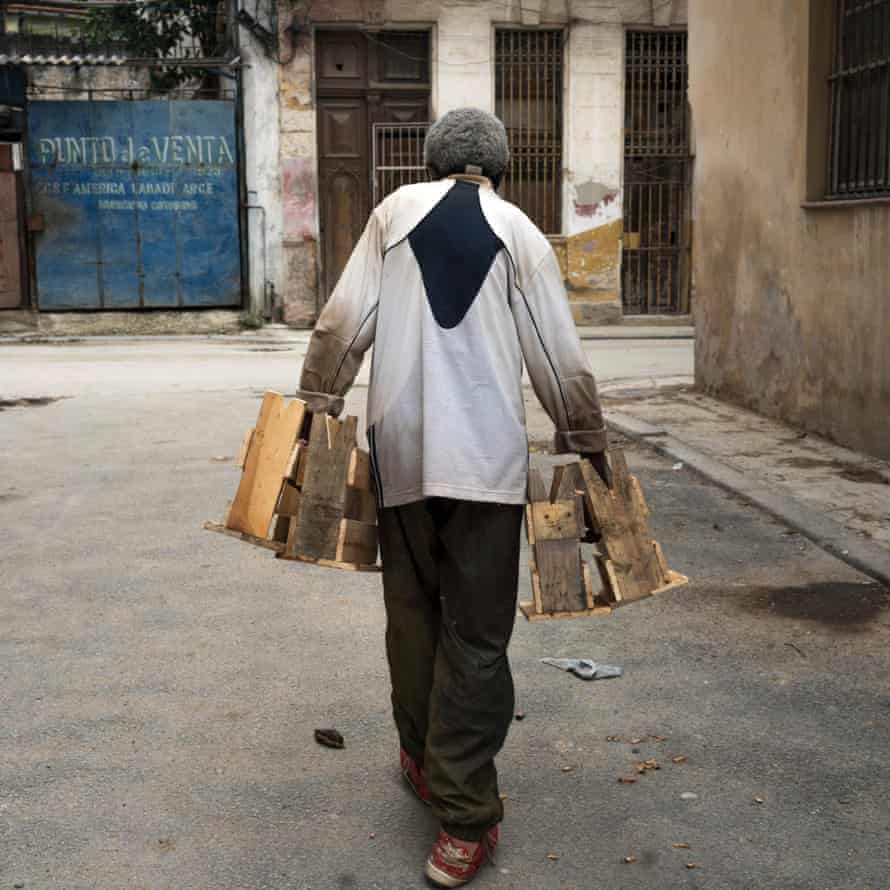
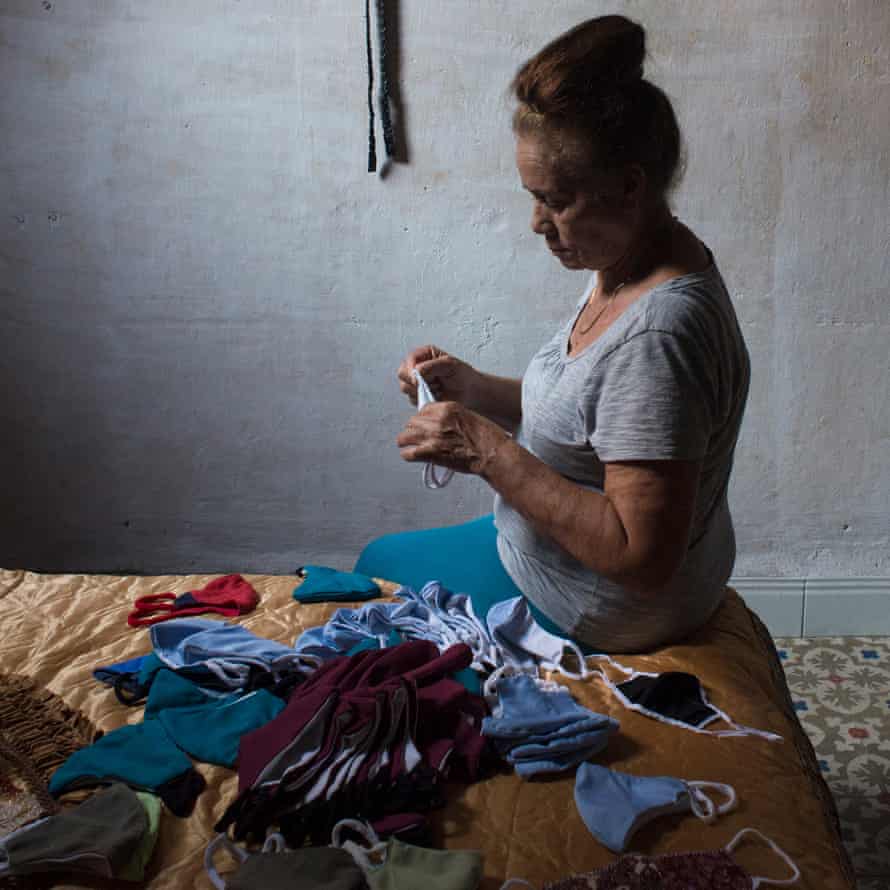
Clockwise from top left: a bread queue forms in the morning; a woman collects chlorine from trucks disinfecting the streets; a retired woman works as a seamstress to make a living; a man sells stools in Reunion Street.
Advertisement
“You know though,” she says. “The best pictures are still in my mind. I saw really amazing pictures, but the people, they were looking at me with faces that said, ‘Please don’t do that’. Sometimes I’d see people in tears.”
She was keeping close focus on her daughters, Avril who is 17 and Mia who is nine.
Avril is a senior at Havana’s storied National Ballet School. Before the pandemic, she would rehearse and train all day in the school’s palatial, light-filled studios. This was reduced to an hour on the ground floor of Leysis’ building. “Although not any more because there are a lot of cases in our neighbourhood and some other guys like to practise there,” Leysis says.
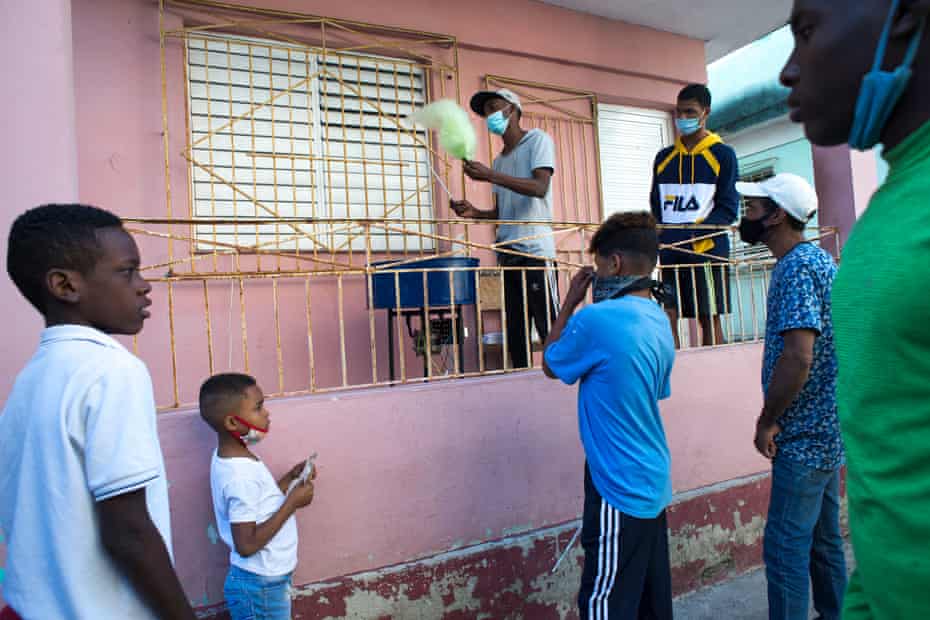
Customers queue for cotton candy.
On 15 November last year Cuba – for reasons both sentimental and economic – reopened its airports. The day before the island had 27 new cases, while the US had 159,003. Planes arrived from Florida packed with exiled family who rushed to all corners of Cuba’s 1,250km length, taking Covid-19 with them.
Avril, almost an adult, could go out and queue for bread, but early in the pandemic the government ruled that children couldn’t be on the streets, so Mia had to stay at home.
“She has been a long time without going anywhere,” says Leysis. “Sometimes I don’t know what to do with her. You cannot buy anything in the shops now and I have run out of paper for her to draw on.
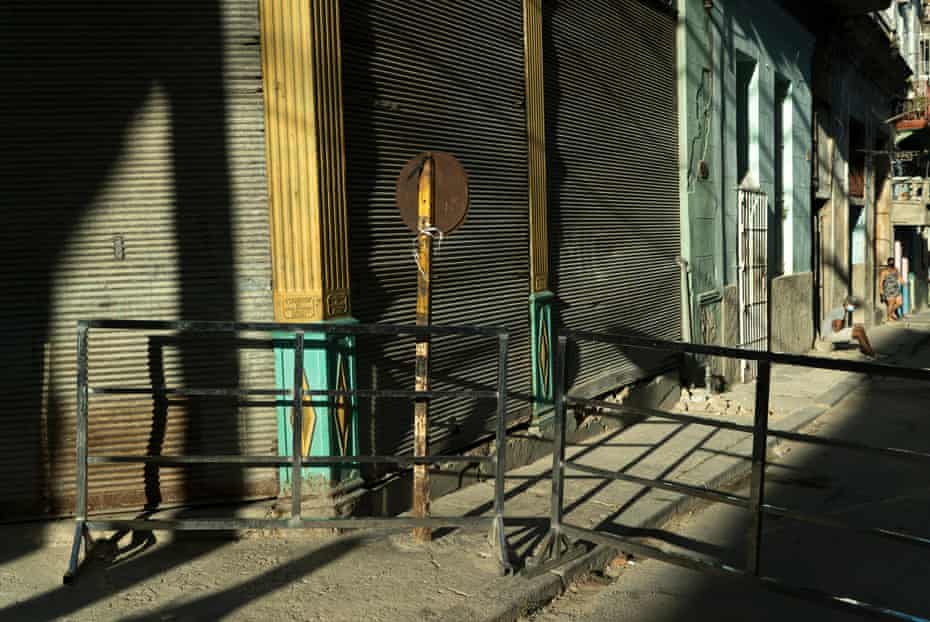
Entry is barred to quarantined blocks in Los Sitios neighbourhood.
Advertisement
“But she is very happy. She is creating all the time. I have no thread because we live on the roof and she has used it to make spider webs. I don’t know how many times she has dressed up.”
Cases have been steadily rising since Christmas. Now reports of the newly infected daily average above 1,000; still far below other countries but people are dying.
Good healthcare and emigration has aged Cuba – the median is 42 (in the US it is 38 and neighbouring Haiti 22) – and so it is a vulnerable population. The authorities plan to start immunising Havana’s population this month in a 1.7m strong trial of two homegrown vaccines, Soberana-02 and Abdala.
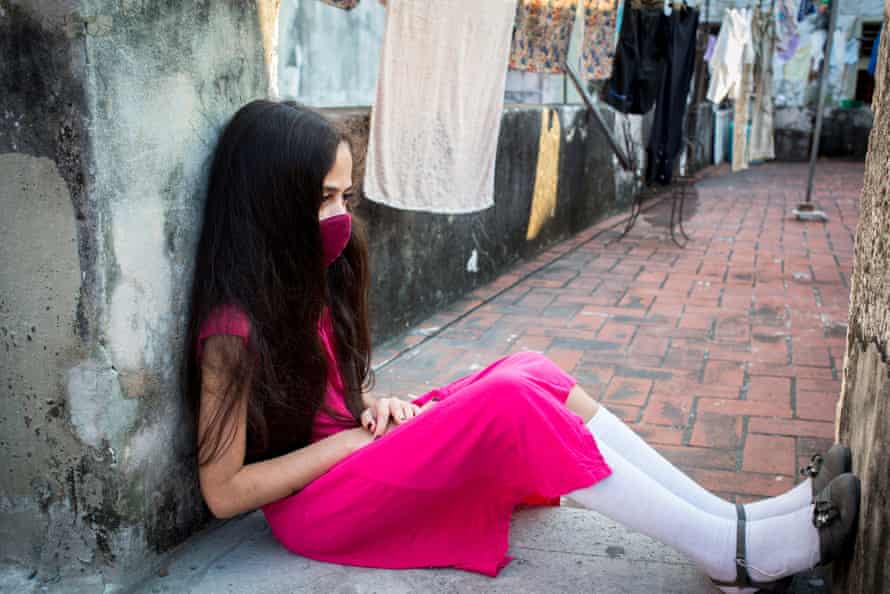
Mia sad and in a bad mood, due to the confinement after almost a year without being able to leave the house.
In the meantime the queues grow longer and food more scarce. “Last year, I spent like, eight hours, nine hours to buy things,” says Leysis. “But now it’s maybe two or three days. I can’t do that. I was walking in the street yesterday and people were fighting. I came back without anything. I felt so, so bad.”
Cuba during the pandemic – photo essay

Avril and her friend are students at the National Ballet School, and train at home.
Photographer Leysis Quesada Vera describes life during the pandemic in Havana’s Los Sitios neighbourhood. Her work is supported and produced by the Magnum Foundation, with a grant from the Henry Luce Foundation. Magnum Foundation is a nonprofit organisation that expands creativity and diversity in documentary photography. Through grant making and mentorship, Magnum Foundation supports a global network of social justice and human rights-focused photographers and experiments with new models for storytelling
by Ruaridh Nicoll
Fri 7 May 2021
Los Sitios lies to the south of Centro, the careworn barrio that gives Havana its coarse voice and whose northern limit is the Malecon, the famous corniche set against the Florida Straits.
The photographer Leysis Quesada Vera describes Los Sitios – her neighbourhood – as home to “people who work with tourists but not in the hotels. They sell cigars, probably illegally, clean the houses where tourists stay, sell souvenirs.”
The pandemic has pauperised these people. “What they’re doing now is queueing to buy things from the store to resell them on the black market.” She understands. She is raising two children and hasn’t had any income for a year.

Tracers, medical students who screen households and undertake contact tracing, confer in the street.
Advertisement
For much of 2020, Cuba’s extensive health system kept the virus all but beyond the island’s borders, but at the cost of tourism. The economy contracted by 11% , imports fell by 40%.
Still, even the few reported cases spooked residents. There was an outbreak in Los Sitios and the authorities blocked the roads in and out.
Leysis is from San Francisco, a village of 50 houses without electricity in the state of Matanzas. She came to Havana in 1996 “like a crazy girl without any home. I’ve been living in all the tough neighbourhoods.”

Yenifer Almeida in the last months of her pregnancy.
She was an English teacher, but hung out with photographers, and in photography studios. “l was going to every exhibition – photography and painting – and I loved the bohemian life.” Her first camera was a Nikon FM2; her greatest subjects would become her daughters, Avril and Mia.
“At the beginning of the pandemic I think everyone was afraid.” Certainly she stayed at home at first, but as the streets were sealed off, she ventured out. “It was a mess before they realised they needed to organise,” she says.
Advertisement
Even prior to the virus, Cuba was suffering. Donald Trump’s administration had tightened the 60-year-old US embargo, shutting down the channels through which Cubans abroad could send money home. Cuba’s antiquated infrastructure was already crumbling, the city falling down around Leysis.
Crowds wait in the streets - an everyday occurrence.
The virus added hunger. The government maintains controls of all imports but now has little hard currency to pay for them. Huge queues formed whenever there were rumours of chicken, oil or medicine.
“It used to be easy for me to walk in the street and take pictures,” she says. “But now, with people suffering and stressed it is different. They’d watch me taking pictures of the queues and were sometimes aggressive. One day a woman attacked me.”
At the same time, medical students were spreading out through the streets, asking door to door for news of symptoms. Leysis photographed them as they slipped by like modern-day plague doctors.




Clockwise from top left: a bread queue forms in the morning; a woman collects chlorine from trucks disinfecting the streets; a retired woman works as a seamstress to make a living; a man sells stools in Reunion Street.
Advertisement
“You know though,” she says. “The best pictures are still in my mind. I saw really amazing pictures, but the people, they were looking at me with faces that said, ‘Please don’t do that’. Sometimes I’d see people in tears.”
She was keeping close focus on her daughters, Avril who is 17 and Mia who is nine.
Avril is a senior at Havana’s storied National Ballet School. Before the pandemic, she would rehearse and train all day in the school’s palatial, light-filled studios. This was reduced to an hour on the ground floor of Leysis’ building. “Although not any more because there are a lot of cases in our neighbourhood and some other guys like to practise there,” Leysis says.

Customers queue for cotton candy.
On 15 November last year Cuba – for reasons both sentimental and economic – reopened its airports. The day before the island had 27 new cases, while the US had 159,003. Planes arrived from Florida packed with exiled family who rushed to all corners of Cuba’s 1,250km length, taking Covid-19 with them.
Avril, almost an adult, could go out and queue for bread, but early in the pandemic the government ruled that children couldn’t be on the streets, so Mia had to stay at home.
“She has been a long time without going anywhere,” says Leysis. “Sometimes I don’t know what to do with her. You cannot buy anything in the shops now and I have run out of paper for her to draw on.

Entry is barred to quarantined blocks in Los Sitios neighbourhood.
Advertisement
“But she is very happy. She is creating all the time. I have no thread because we live on the roof and she has used it to make spider webs. I don’t know how many times she has dressed up.”
Cases have been steadily rising since Christmas. Now reports of the newly infected daily average above 1,000; still far below other countries but people are dying.
Good healthcare and emigration has aged Cuba – the median is 42 (in the US it is 38 and neighbouring Haiti 22) – and so it is a vulnerable population. The authorities plan to start immunising Havana’s population this month in a 1.7m strong trial of two homegrown vaccines, Soberana-02 and Abdala.

Mia sad and in a bad mood, due to the confinement after almost a year without being able to leave the house.
In the meantime the queues grow longer and food more scarce. “Last year, I spent like, eight hours, nine hours to buy things,” says Leysis. “But now it’s maybe two or three days. I can’t do that. I was walking in the street yesterday and people were fighting. I came back without anything. I felt so, so bad.”
No comments:
Post a Comment